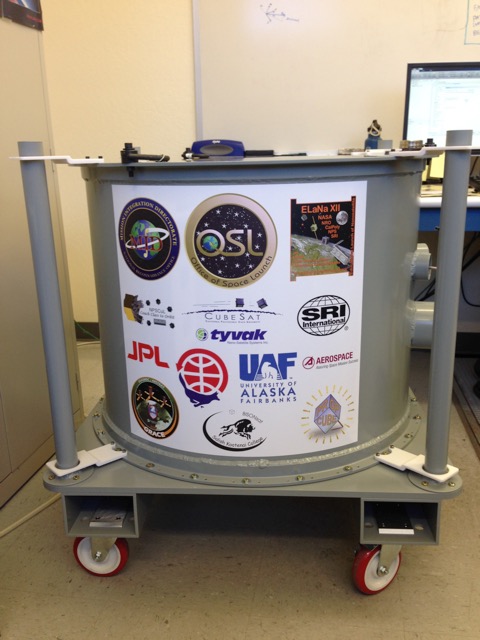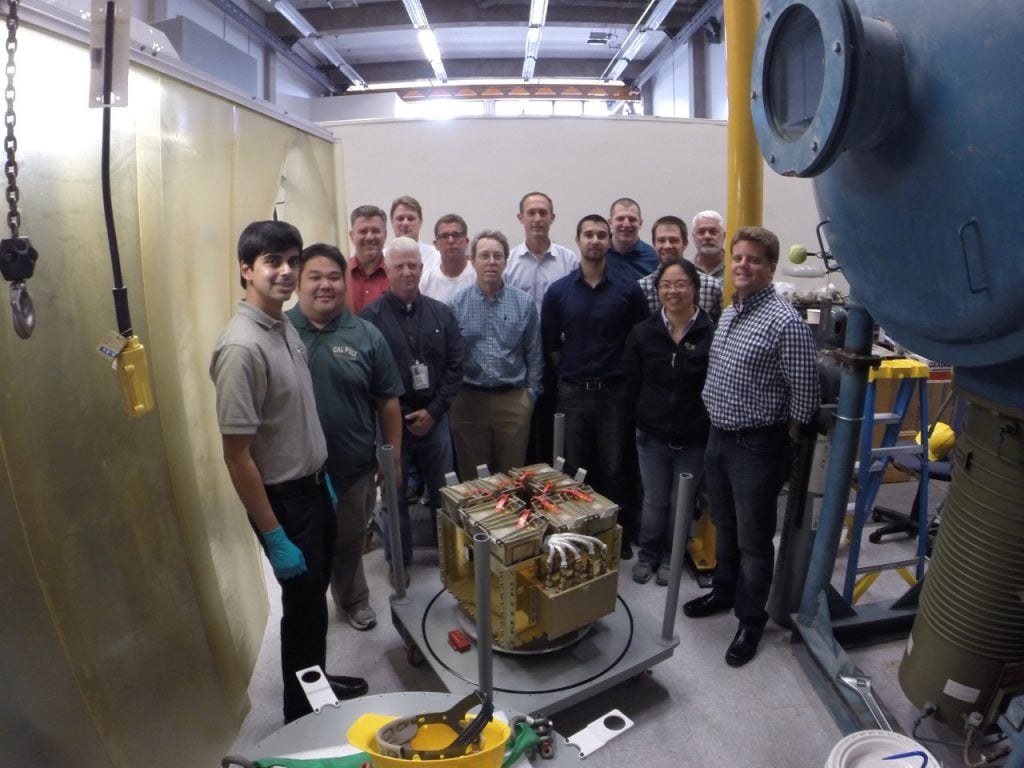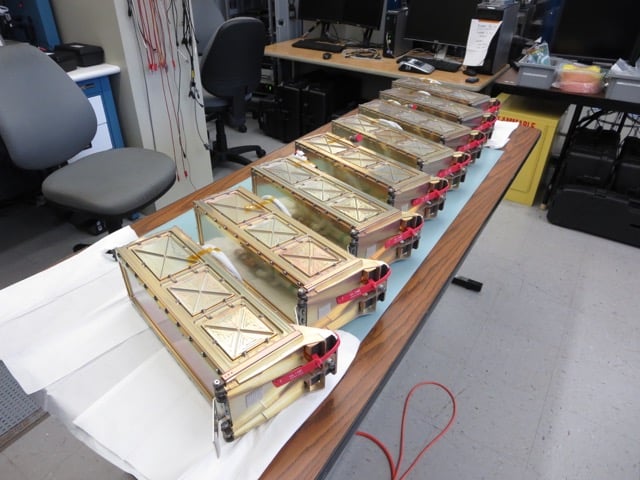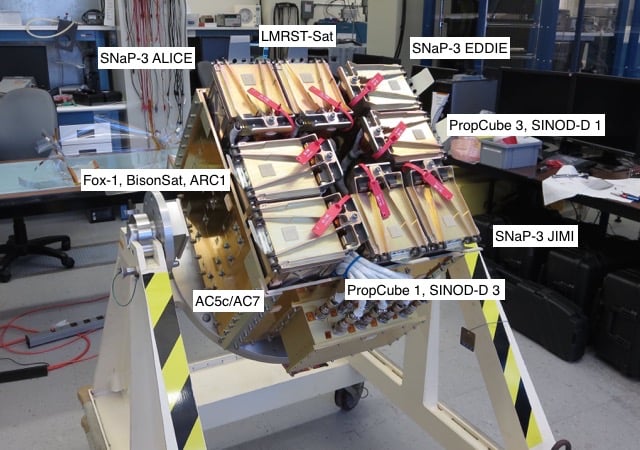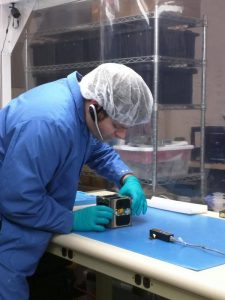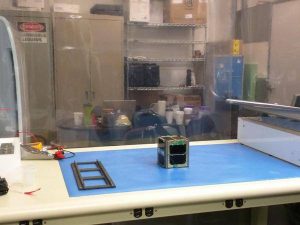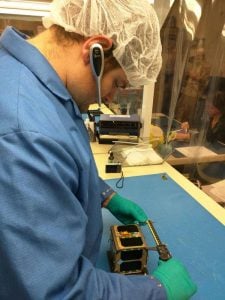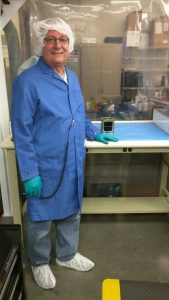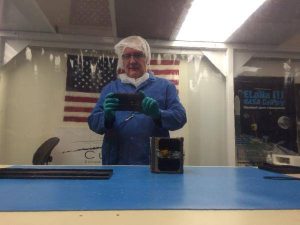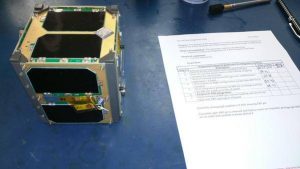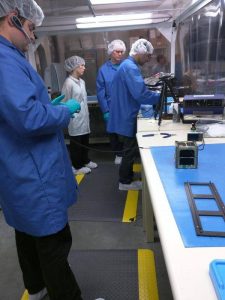AMSAT Vice President – Engineering Jerry Buxton, N0JY, announced plans to incorporate an L band receiver in Fox-1C and Fox-1D. The addition will allow ground commanded selection of the U/v (normal Fox-1 bands) or the new L/v 1.2 GHz (23 cm) mode. Both bands will operate as FM single channel.
Rather than adding a complete new receiver, the L band “Project Downshifter” will convert the received L band signal down to the Fox-1 uplink frequency and feed it to the regular UHF receiver on the Fox-1satellite. The design will not require an additional antenna on the satellite because the existing UHF antenna will work for L band receive as well.
In concert with the development of the satellite segment, a new group of volunteers is working on a companion uplink station to convert UHF to the L band uplink frequencies:
+ Bruce Herrick, WW1M
+ Dan Hubert, VE9DAN
+ Elizabeth Schenk, KC1AXX
+ Dave Smith, W6TE
+ Alfred Watts, AF5VH
The team is planning to have an affordable L band uplink ground station available to amateurs by the time Fox-1C is on orbit.
In further news, Jerry announced the plan to construct a Fox-1E “Evolution” variation of the Fox-1 series which will carry a Mode J linear transponder. The transponder is planned to be 30 kHz wide and will also have a 1200 bps BPSK telemetry beacon.
The purpose of the project is to test a design for a linear transponder that could be made available to CubeSat builders as a secondary, or even primary radio payload thus bringing more opportunities for amateur radio in space as well as offering AMSAT’s proven communications skills as a telemetry option.
AMSAT has been approached for a launch opportunity for Fox-1E in 2016, but launch details can not be shared at this time.
Jerry concluded, “It is important that we find additional resources to help the Fox-1 Team with these new endeavors. We are looking for volunteers who have solid RF building and testing experience to work on both the downshifter and the transponder prototyping and construction.” If you would like to help and be a part of the success of Fox-1C/D and Fox-1E, please contact Jerry through the AMSAT Engineering volunteer form page on-line at: http://ww2.amsat.org/?page_id=1121.

